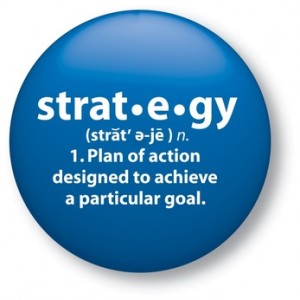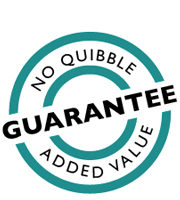Strategy explained
 The Cambridge dictionary defines strategy as ‘A detailed plan for achieving success in situations such as war, politics, business, industry or sport, or the skill of planning for such situations.’ The Oxford dictionary prefers a more concise definition: ‘A plan of action designed to achieve a long-term or overall aim.’
The Cambridge dictionary defines strategy as ‘A detailed plan for achieving success in situations such as war, politics, business, industry or sport, or the skill of planning for such situations.’ The Oxford dictionary prefers a more concise definition: ‘A plan of action designed to achieve a long-term or overall aim.’
A strategy is not a shopping list of things to achieve, but the specific key steps and actions which a business believes will enable it to achieve its vision.
A well thought out and well articulated statement of strategy will typically have 4-6 key strategic thrusts which are critical to turning vision into reality.
Strategy guru Michael Porter identified three generic strategies in his best seller ‘Competitive Strategy’ that companies deploy to outperform its competitors. These generic strategies are:
- Cost leadership
- Differentiation
- Focus
Whilst these generic strategies, or combinations of generic strategies, can be highly effective when well executed, they are not appropriate for all companies in all situations. For example, a small competitor pursing cost leadership would struggle to obtain it if cost leadership was dependent on economies of scale.
Competitive position is the most important consideration when determining which is the optimum strategy for a business to pursue. Furthermore, there are many learnings from war that can help inform this most fundamental of business critical decisions.
Empirical observation of different companies across different industries concludes that economic performance correlates to competitive position within a market. As a rule of thumb:
- Market leaders enjoy superior returns
- Number twos make good returns
- Number threes make average returns but this can be a bumpy ride
- The small competitors either struggle to survive or make superior returns depending on the strategy chosen
The most effective strategy for a market leader is unlikely to create value for the third largest competitor and indeed may well destroy value. The most effective strategy for a small competitor would not be the most effective for the number two player in a market.
Al Ries and Jack Trout of ‘Marketing Warfare’ fame argue that there are four alternative generic strategies for competing in a market which correlate with competitive position. Each of these strategies have a number of easy to learn but often fiendishly difficult to apply principles. Ries and Trout’s four generic strategies are:
In addition, companies can also consider acquisitions, mergers and exit. Acquisitions and mergers generally build scale and ability to compete as well as providing scope for cost savings synergies. Nevertheless, most studies conclude that two out of three acquisitions destroy value for the acquiring company’s shareholders.
There is a high premium on strategic competence, but remember strategy is only one of the 7S’s that need consideration when seeking to step up business performance.
To discuss your business critical issue
Please call Paul New on 020 8390 9972 or 07790 501225 or send a message.







